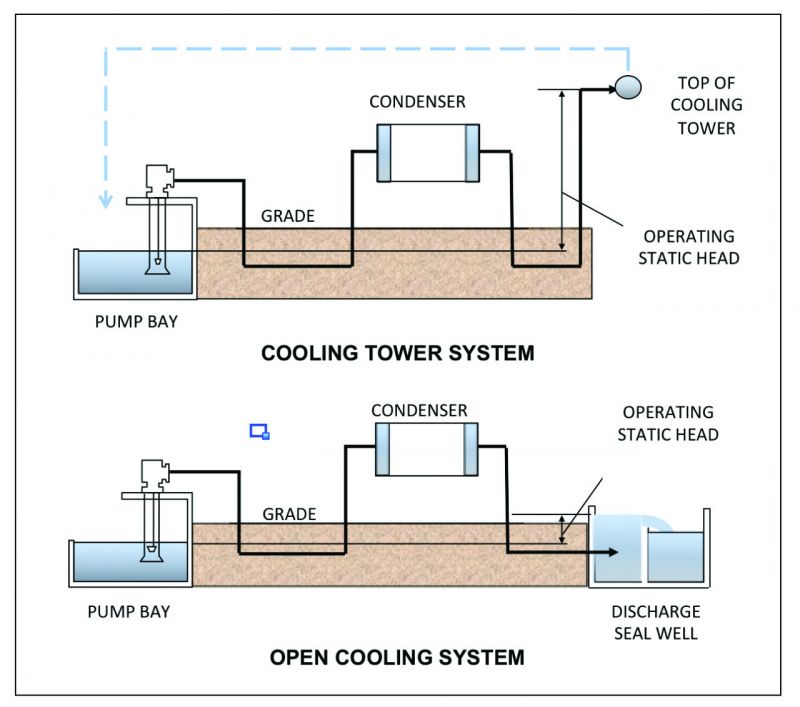How to Prevent Circulating Water Flow Reversal
Published on by Water Network Research, Official research team of The Water Network in Technology
Flow reversal in piping systems can degrade equipment performance and cause significant water hammer, potentially resulting in catastrophic failure.
By Michael F. Czyszczewski

Two standard configurations. Most power plants use either the
cooling tower design or the open cooling design for
steam turbine condenser circulating water systems.
Source: Michael F. Czyszczewski
Power plant condenser cooling water systems—or circulating water systems—are especially prone to reverse flow. The advantages and disadvantages of various valves used to prevent reverse flow are presented in this article to help readers select appropriate solutions to avoid trouble.
Flow reversal is a serious problem that can occur in piping systems with parallel pumps or in systems that pump uphill. When one or more pumps trip out of service, the loss in pressure can cause reverse flow to form based on the piping’s elevation, slope, flow resistance, and pressure differential.
Circulating water (CW) pumps used for condenser cooling are normally the largest pumps at a power station, commonly delivering flows of 150,000 gallons per minute or higher. If a CW pump trips, reverse flow, water hammer, backwards pump rotation, pump over speed, pipe over pressure, pipe vacuum pressure, cavitation, or a forced steam turbine shutdown can occur.
Reverse flow protection requires more thought than simply installing a conventional check valve. This article will describe the problems that reverse flow can cause and show examples of various effective solutions.
If the down-surge drops the pressure to the water vapor pressure (full vacuum), the water will start to vaporize. When an up-surge occurs, the pressure increase will cause the vapor bubbles to implode. That is known as cavitation, and it can erode internal piping and component surfaces.
Stopping Reverse Flow
The most common device used to prevent reverse pipeline flow is a check valve (also known as a nonreturn valve or zero-velocity valve). Most check valves begin to close when the forward flow velocity is approaching zero and the downstream pressure exceeds the upstream pressure. The valve disk opens when these conditions reverse.
A power-assisted valve (PAV) can also be used to prevent reverse flow. Unlike a check valve, a PAV does not start closing at the time of flow reversal, but rather, is programmed to start closing when the pump trips. Once closed, it does not begin to reopen until the pump starts.
PAVs and some check valves can be specified to close at two speeds. For example, the operator can be programmed to close quickly to about the 20% open position and then close much slower through the remaining distance. The initial fast speed helps to minimize backflow through the valve, while the following slow speed minimizes the water hammer potential.
Read full blog: Power Magazine
Media
Taxonomy
- Water Supply
- Water Supply
- Leakage
- Water Management
- Infrastructure
- Leakage Reduction
- Integrated Infrastructure
- Water Resource Management
- Infrastructure Management
- Utility Pipe Network
- Pipes and Pipelines